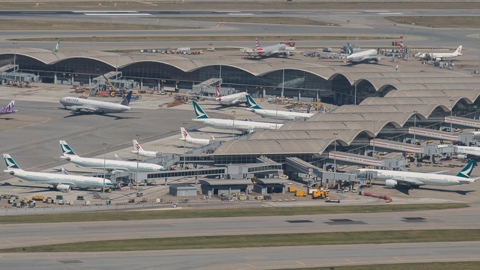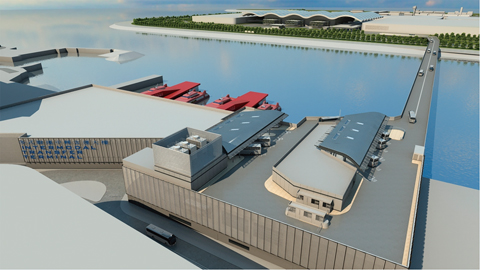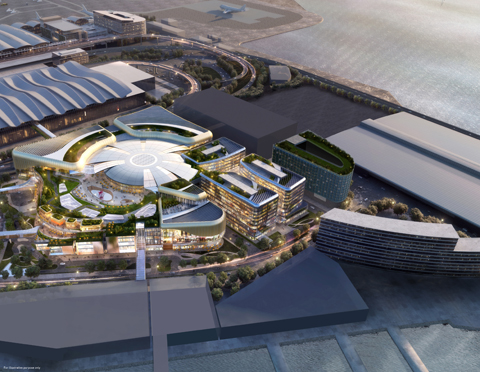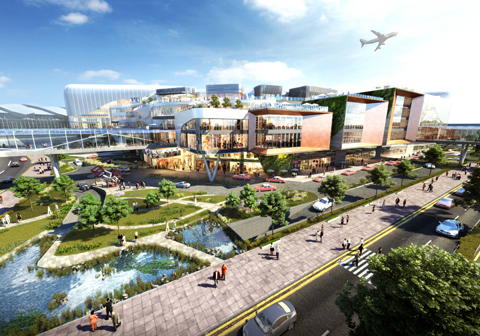Building top-class international aviation hub
14 April 2019
I am pleased to learn that the Immigration Department (ImmD) has again won the Best Airport Immigration Service Award presented by Skytrax, an international specialist research agent of the air transport industry.
The award, hailed as the “Oscar of the Aviation Industry”, was adjudicated on the basis of the ratings on the immigration service of 550 airports given by over 13 million air passengers from more than 100 countries or regions around the world. Even in the face of the ever-increasing passenger volume and keen competition among the airports worldwide in terms of immigration service, the ImmD was consistently in the top league in the past five years, winning three times in 2015, 2016 and 2019 respectively. This clearly showcases the efficiency and professionalism of the HKSAR Government and its public services. Earning worldwide recognition and acclaim once more is never an easy task, and we should be proud of it.
Our civil service is renowned for its high efficiency, professionalism, integrity and impartiality. Colleagues from various departments discharge their duties diligently at control points, providing safe, speedy and tailored clearance service for arriving and departing passengers. I would like to express my heartfelt gratitude for their unfailing efforts to deliver world-class service in their respective positions for a better Hong Kong.
Convenient and user-friendly immigration service is of paramount importance to travellers. The e-Channel, a self-service immigration clearance system equipped with up-to-date technologies, is utilised in tandem with various facilitation measures to enhance the clearance capacity of control points. Currently, over 700 multi-purpose e-Channels are installed at various control points, which can be flexibly deployed for use by Hong Kong residents or visitors to Hong Kong. Besides, Smart Departure, launched in late 2017, uses face recognition technology to facilitate self-service departure for eligible visitors without the need for prior enrolment. Over 6.2 million visitors used the service from its launch to the end of 2018. The Smart Departure also won the Radiant Pioneer Award offered by the Asia Pacific Smart Card Association in December 2018. It is evident that a smart city is people-centric. Provision of convenient service by applying intelligent technologies is not only well received by the public and visitors but also widely recognised by the technology sector.
In a smart world full of challenges and opportunities, our Government strives to build Hong Kong into a world-class smart city. “Smart Government”, one of the key areas of the Smart City Blueprint, encourages innovation through opening up data, providing smart city infrastructure and adopting technology to enhance Hong Kong’s sustainability.
 |
The Hong Kong International Airport (HKIA) has recorded continuous traffic growth in recent years, maintaining its status as one of the busiest international cargo and passenger airports in the world. There are about 1 100 daily flights connecting Hong Kong to over 220 destinations worldwide. In 2018, the HKIA handled over 74 million passengers and 5.1 million tonnes of cargo and airmail. It has been the world’s number one airport in terms of freight volume for nine consecutive years and consistently one of the top three airports in terms of international passenger volume.
To meet Hong Kong’s huge air traffic demand and long-term development needs, the Airport Authority Hong Kong (AAHK) is pressing ahead with the HKIA’s three-runway system (3RS) project scheduled for completion by 2024. When the 3RS comes into full operation, the airport is expected to handle around 100 million passengers and up to some 9 million tonnes of cargo annually.
The 3RS will also create plenty of job opportunities for our aviation industry. The AAHK has projected that following the commencement of the 3RS, the airport can provide around 120 000 direct jobs and nearly 160 000 indirect or induced jobs (including aviation-related and unrelated jobs), bringing about an impressive increase of over 70 000 jobs as compared with the current level.
In the Outline Development Plan for the Guangdong-Hong Kong-Macao Greater Bay Area and the Dedicated Chapter on Hong Kong and Macao in the National 13th Five-Year Plan, the Central Government has made clear its support for Hong Kong to consolidate and enhance its status as an international maritime centre. Benefitting from the formal commissioning of the Hong Kong-Zhuhai-Macao Bridge (HZMB), the HKIA, located on Lantau, will serve as a “Double Gateway” to the world and the Greater Bay Area.
The HKIA has an important strategic function for both the Greater Bay Area and the country as a whole. Hong Kong will continue to support the complementary development of nearby airports in the Greater Bay Area and work together with them to make use of the uniqueness of each airport. We will also expand the domestic and international aviation networks in the Greater Bay Area, proactively take forward intermodal services, steadily develop cross-boundary helicopter services, and leverage Hong Kong’s unique role as a centre for manpower training of the aviation industry and for aviation financing and leasing.
In February 2019, the Transport and Housing Bureau and the Civil Aviation Administration of China signed a Memorandum of Understanding to expand the intermodal code-sharing arrangements between the Mainland and Hong Kong, which allows passengers to use the same air ticket to travel on various modes of land and sea transport connecting different Mainland cities. This will significantly expand the catchment area of our airport’s service in the Mainland.
 |
 |
 |
The AAHK is actively taking forward the Intermodal Transfer Terminal project. The terminal, expected to open in 2022, will be used for the provision of feeder bus service for air-to-bridge/bridge-to-air transfer passengers travelling between the HKIA and Macao/Zhuhai Boundary Crossing Facilities via the HZMB. On the one hand, the journey time of transfer passengers travelling between Hong Kong, Macao and the Western Pearl River Delta (PRD) region will be shortened as a result of not requiring passengers to go through Hong Kong’s immigration clearance. On the other hand, the HKIA will have its market hinterland expanded and its intermodal connectivity in the PRD region enhanced.
There is another piece of good news. The HKIA’s competency in handling temperature-controlled airfreight has earned recognition. Last month, it was officially recognised by the International Air Transport Association (IATA) as a Partner Airport of IATA’s Centre of Excellence for Perishable Logistics (IATA CEIV Fresh), the first airport community in the world to receive the IATA CEIV Fresh Certification. The recognition epitomises our airport’s excellent capability to transport and handle perishable cargo in a stringent temperature-controlled process at globally assured standards. In 2018, the HKIA handled over 380 000 tonnes of perishables, which accounted for about 8% of its total cargo volume, marking a strong growth in perishable cargo throughput with a year-on-year increase of 12%. It is expected that the growing trend will continue after the certification.
In addition, the AAHK is actively taking forward the SKYCITY development project, one of the largest commercial projects in Hong Kong. Covering approximately 25 hectares of land, SKYCITY is an integrated development comprising retail, dining and entertainment uses to help enhance the attractiveness and competitiveness of the HKIA. The development of SKYCITY will dovetail with the planning of the 3RS and other developments on Lantau to maximise the synergy.
Looking forward, the Government will stay committed to enhancing Hong Kong’s competitiveness in all aspects in order to foster high value-added development and promote upward social mobility.

